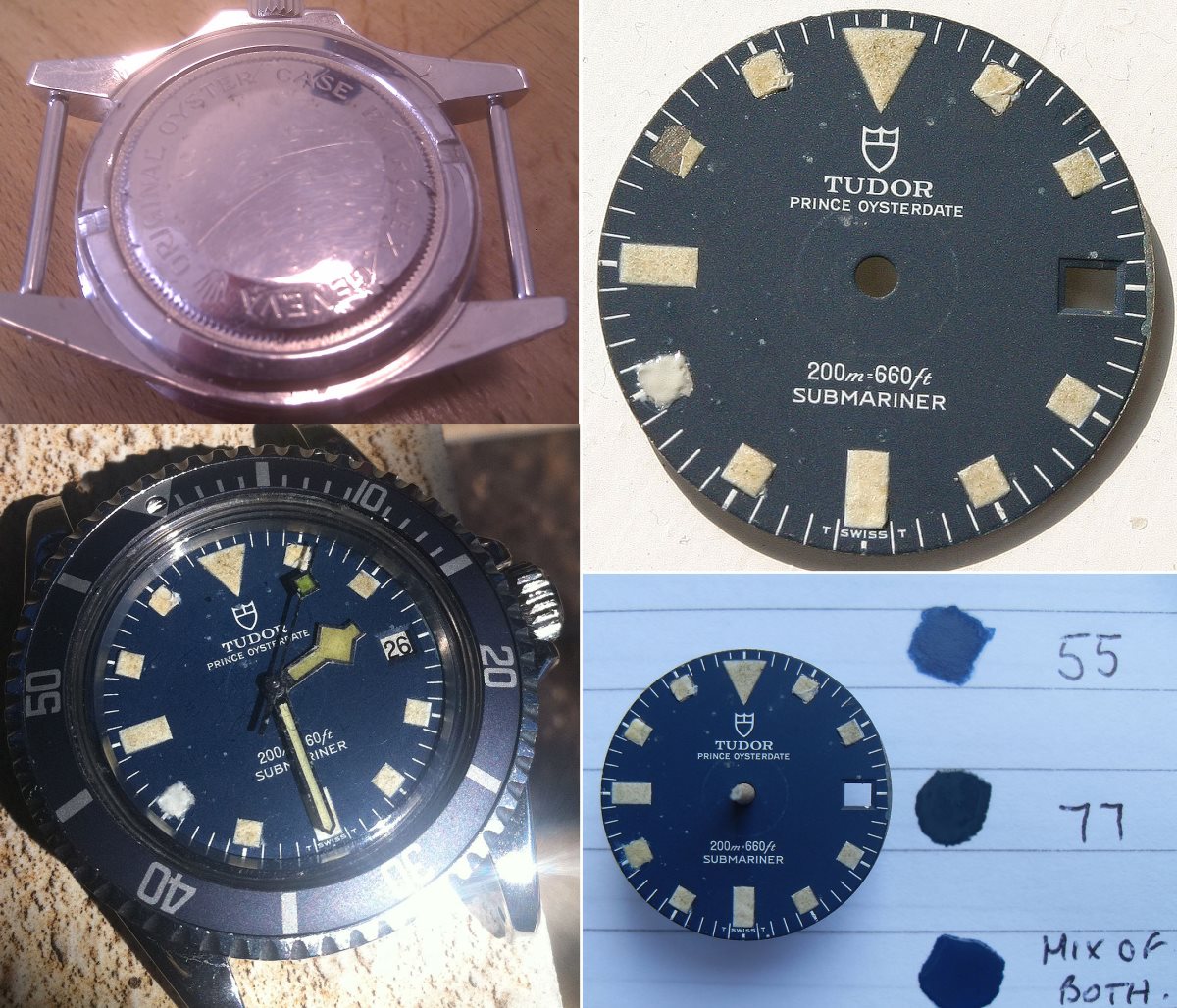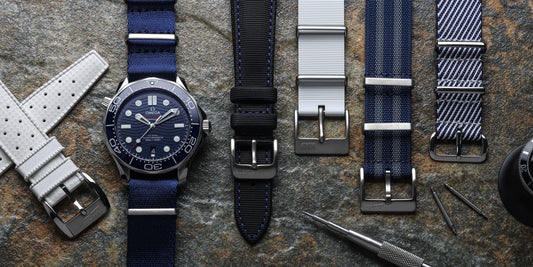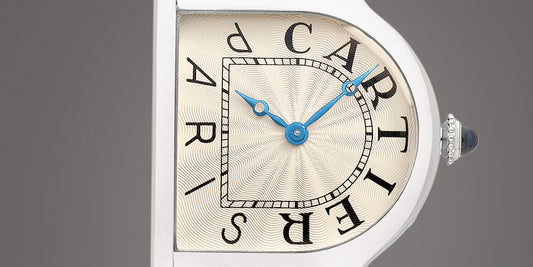Find out how I worked to bring a Tudor Snowflake Submariner back to life.
About a dozen years ago I almost stumbled across the world of watches. I was initially fascinated to see that I could get myself an Omega Speedmaster (a 176.0012 for those that know them) for as little as US$750. I was hooked, and I certainly wish I could do the same now.
That gateway watch has led to many more, but I only want to discuss one of them here...
My burgeoning interest quickly got me researching and recognising that there are some icons in the watch world. Designs that have endured and been emulated by a plethora of smaller brands, and still retain their essence and attraction today. It is certain that the greatest of these icons is the Submariner, a design that effortlessly pulls off a combination of practical capability and elegance, one that can be dressed up to a suit, down to shorts or jeans, and into the water over neoprene.
Rolex designed the Submariner and released it 65 years ago in 1953, but my Sub is not a Rolex, although the case was made by them.
Tudor is Rolex's sister brand, a deliberately stoic English name started by Hans Wilsdorf, the Rolex founder, in order to bring Rolex's innovative technology to a different market segment. For the first 60 years of Tudor's existence, the strategy was simple. Put externally-sourced movements into the cases that Rolex were producing for their own range. It worked.
So, in 1954, only a few months after Rolex released their own Submariner, Tudor released theirs. Initially, the Tudor examples looked very similar to the Rolex, sharing hand and dial designs all the way into the late 1960s.

At this point, the French Navy, the Marine National, were looking for watches for their divers. They recognised the impressive Rolex case design, especially the crown, which used triple seals to ensure water stayed away from the movement inside. They realised that all these features could be had in a more economic watch from Tudor, rather than the parent company. But they thought of some improvements, so they requested that Tudor develop a hand and dial variation that maximised the areas of luminous material, and had clear distinction between the hour and minute hands, enabling their divers to read the watch with ease in the murky depths that they operated at.
Tudor did just that, and the Snowflake was born, which was initially produced from 1969 to 1981. And they have more recently revived the design with massive success in the Pelagos and Black Bay ranges.

But mine is a 1976 example, in the middle of that first run, a 9411/0, the first year to use a hacking movement. I bought it in 2011, in a sorry state, because at that time my finances didn't allow me to afford a pristine example. But I knew I wanted a Blue Snowflake.
Someone had clearly attempted to repair the watch but did not have a Rolex case wrench to open it up, so had cut 2 grooves on either side of the caseback to be able to open it. Whatever work had been done was distinctly unsuccessful, it was not keeping time very well and had poor power reserve. The dial had suffered, with 3 of the luminous indices having flaked clean off the dial. 2 had been re-applied with glue, and the 3rd had been replaced by a messy gob of white paint. A 4th index dropped off the dial 2 days after it arrived. There was background dial paint missing, around score mark across it and pale spots all over. Finally, 2 of the hands had been treated to a re-lume with some particularly kryptonic green stuff and the crystal was an aftermarket replacement.
It was a face only a few people could love, but I gladly took it on as the starting point for a rolling restoration.
The early condition, note the caseback cuts (top left), the toxic-looking hand lume (bottom left), partially restored dial with paint match samples (bottom right), and showing how the 10 indices fell clean off (top right).
WIthin the week I sent the dial and hands off for a re-lume, whilst getting the movement serviced and a replacement crystal. At the same time, the caseback was laser-weld-filled and machined back to original profile.
A few months later, it was back with me, much improved. It worked, kept time, had a decent reserve, and was waterproof too.
The re-lumer and I had agreed on how to approach it and I trusted his best efforts. We had to re-lume every index, the fact that the 10 index had just fallen off meant there was no stability left in the original binder material. The results were impressive, but an unforeseen problem was that he had been mistakenly supplied with a satin-finish binder that gave the indices a partial gloss it would never have had originally. Not ideal, but that was okay, I had my Blue Snowflake, serviced, working and on my wrist. It looked pretty good to me.
Perfectly adequate, you have to look hard to see the slightly wavy edges on the indices at 1, 2, 8 and 11...
I strongly believe that watches are for wearing, so my venerable old sub got worn for everything that I happened to be doing. Snowboarding, surfing, climbing. In the workshop, on holiday, wherever.
I collect watches so there isn't one that gets worn for every occasion, but for most, the Snowflake was it.
I liked the simple fact that it had scars, that I had time and effort invested in it, and that it wasn't "As new", so I could use it as intended. When a restoration returns the watch to pristine condition, there is a temptation to maintain that condition by wearing it rarely, and in only certain restrained situations where it won't get knocked, bumped or wet. I cannot imagine a watch less suited to such a straitjacketed life than a Sub. So, it became more of a companion than many of my collection, even though a few of those were much newer and had specifications even more suited to an active life.

But over time it became more and more apparent to me that the dial still lacked the finesse that it originally had, from the factory. So, as the years of wear built a requirement for another service, I formulated a plan to improve it further, and last year I did exactly that when the automatic winding became worryingly noisey. Once again, dial and hands parted company with the rest of the watch for a couple of months, and whilst the mechanism was serviced in the UK, the "Snowflake parts" were afforded a spa treatment in the far east. Since last summer, my faithful watch is back together, and once again, often on my wrist, regardless of the situation.
So while the first restoration banished the cracked, missing or glued indices, this second goes a lot further. Shiney lume has been removed, dial scratches and spots have been toned down, index edges have been re-established and the dial once again looks how it should. The work done on the dial is incredibly subtle, with slight porosity in the "lume".

The Snowflake in its current state at the recently 'An Evening With WatchGecko' event
I am glad to have my faithful friend back with me, looking as good as it should. Sure, the case still has scratches, the crystal does too, The hands are slightly corroded and there are some marks still on the dial.
But that is its character, it wears it well, and I see no need to try and improve it further.








